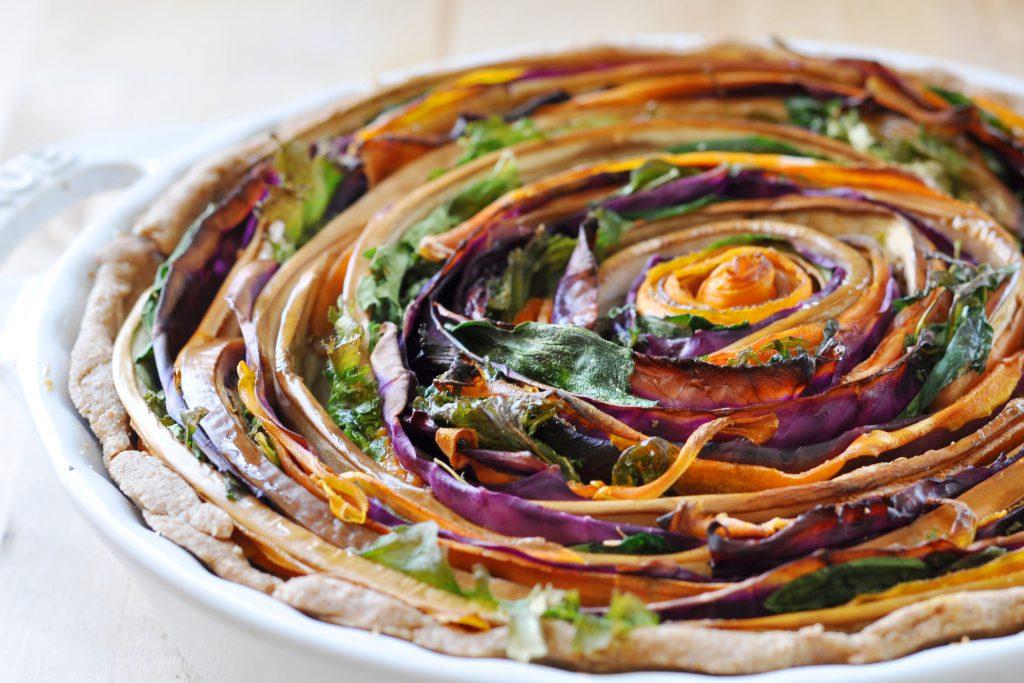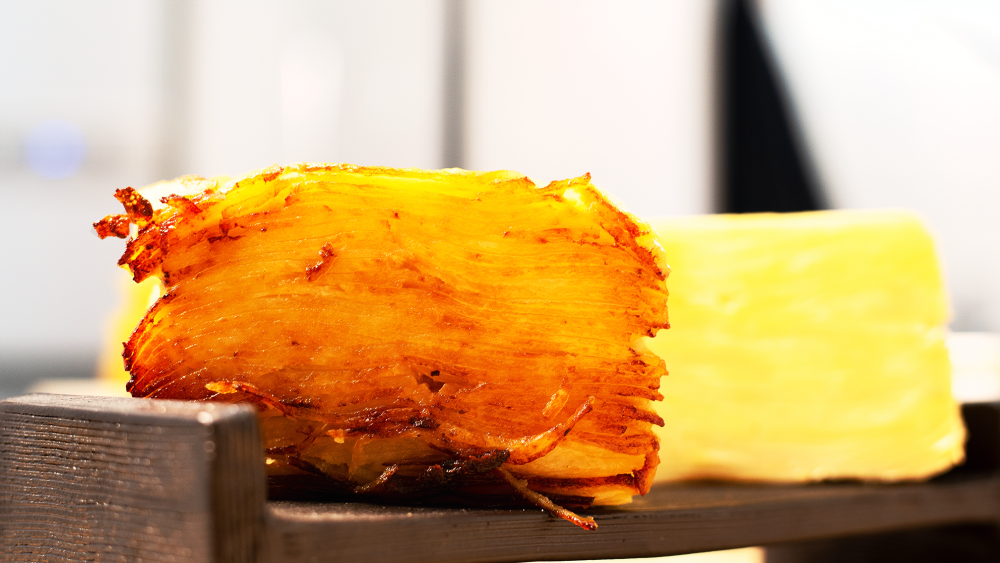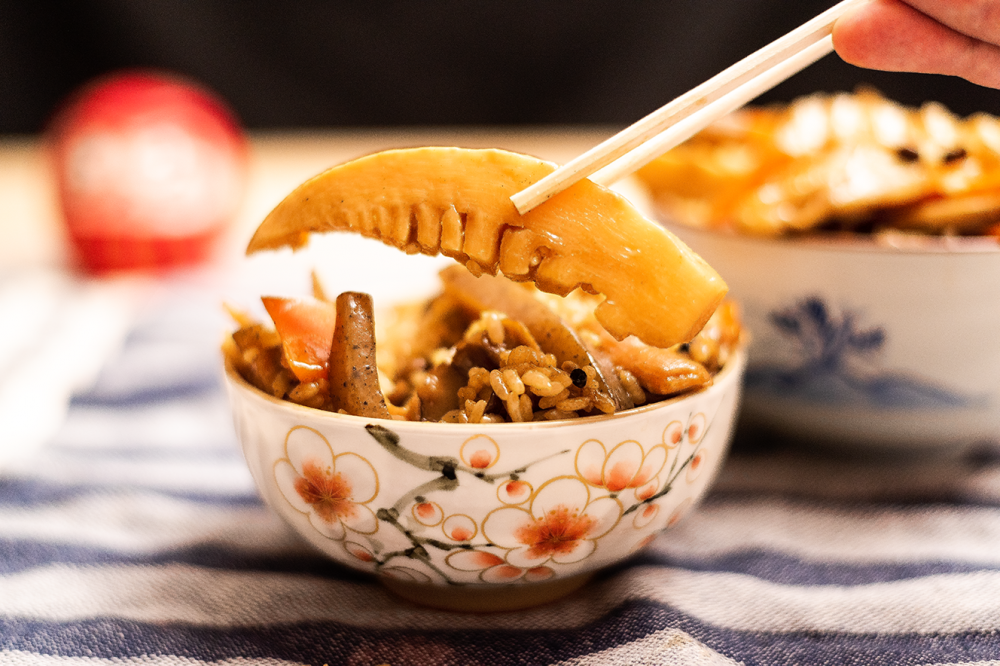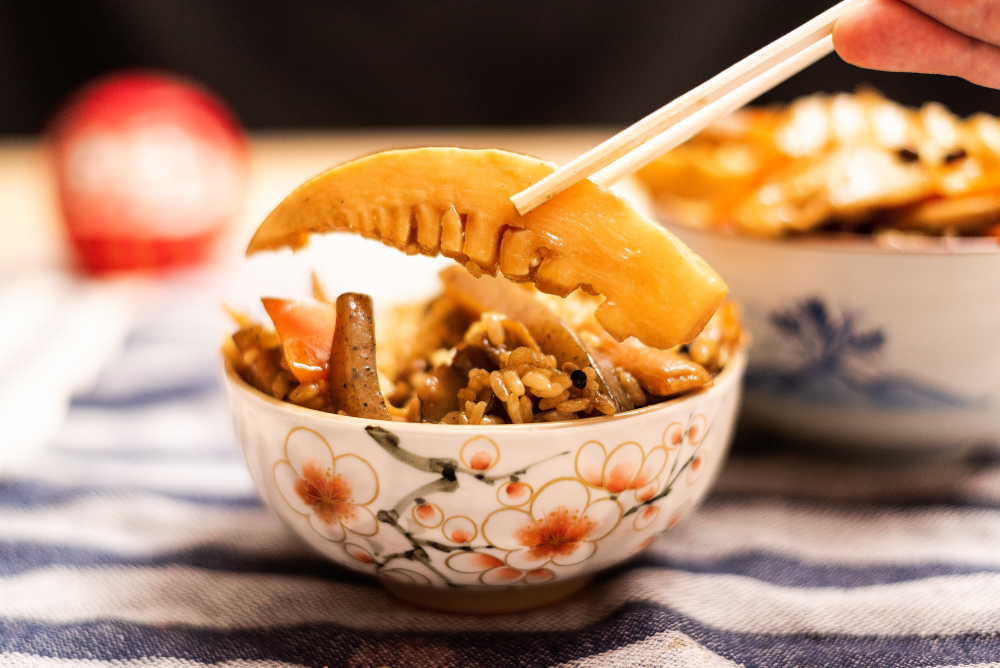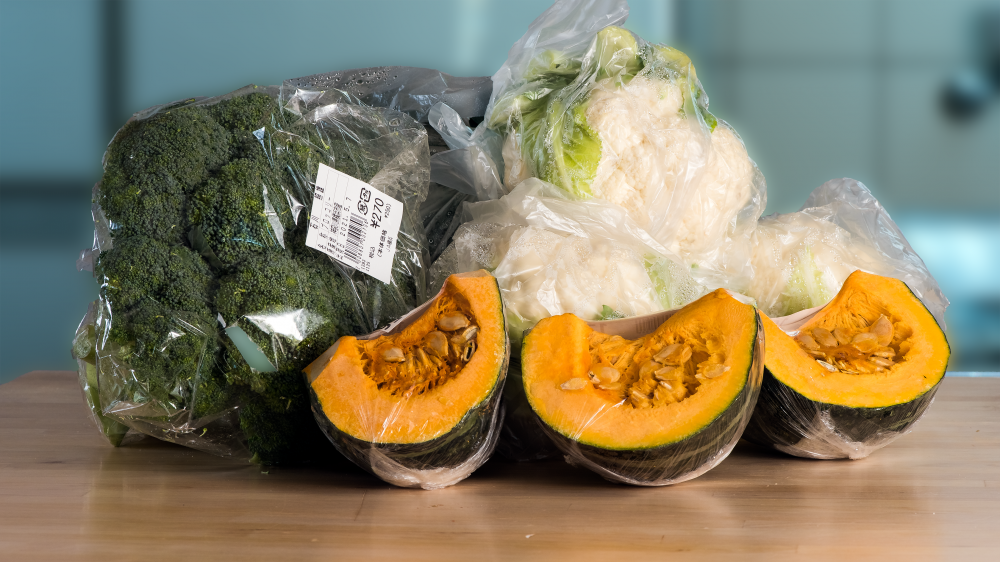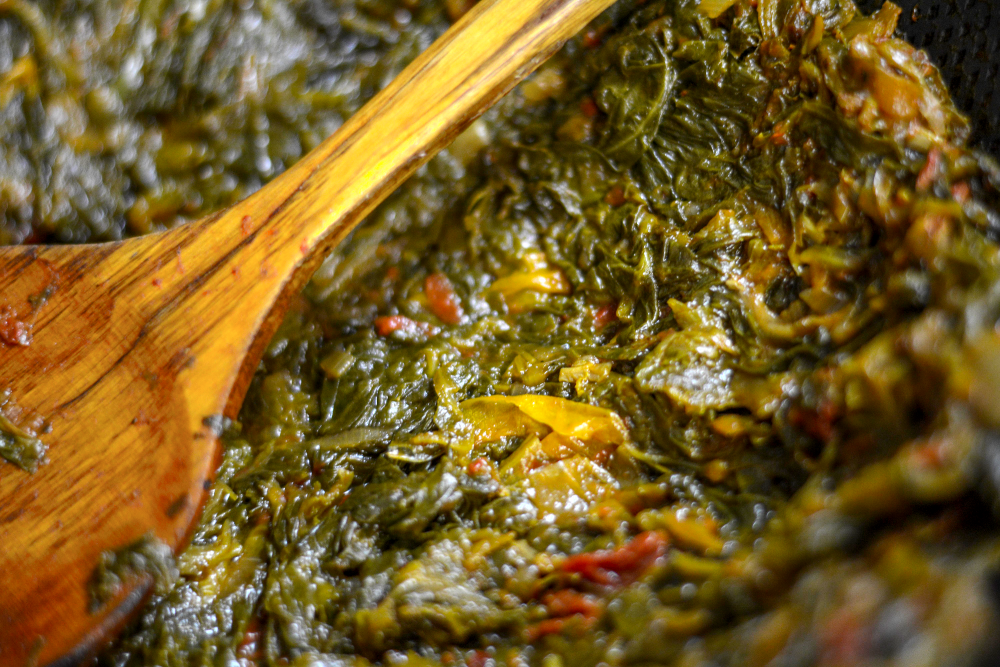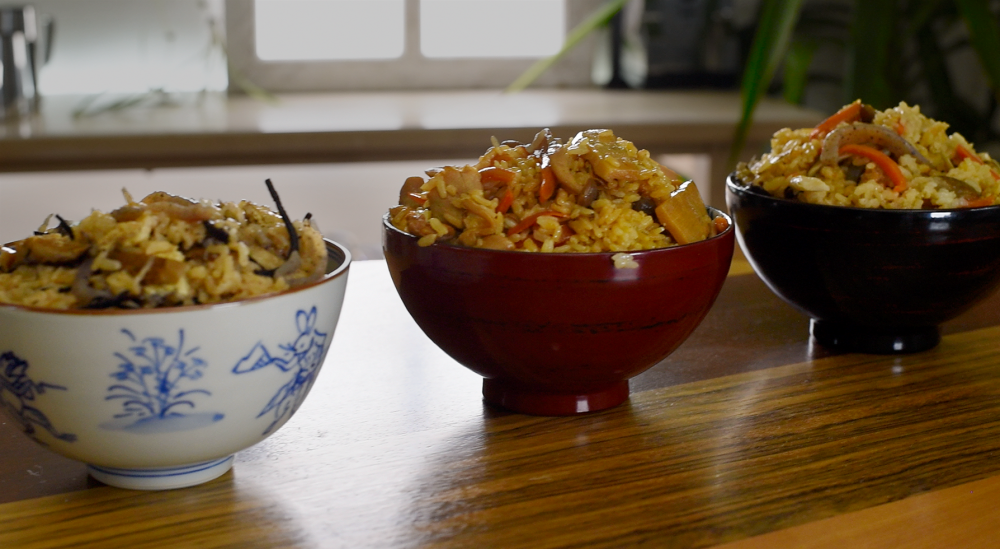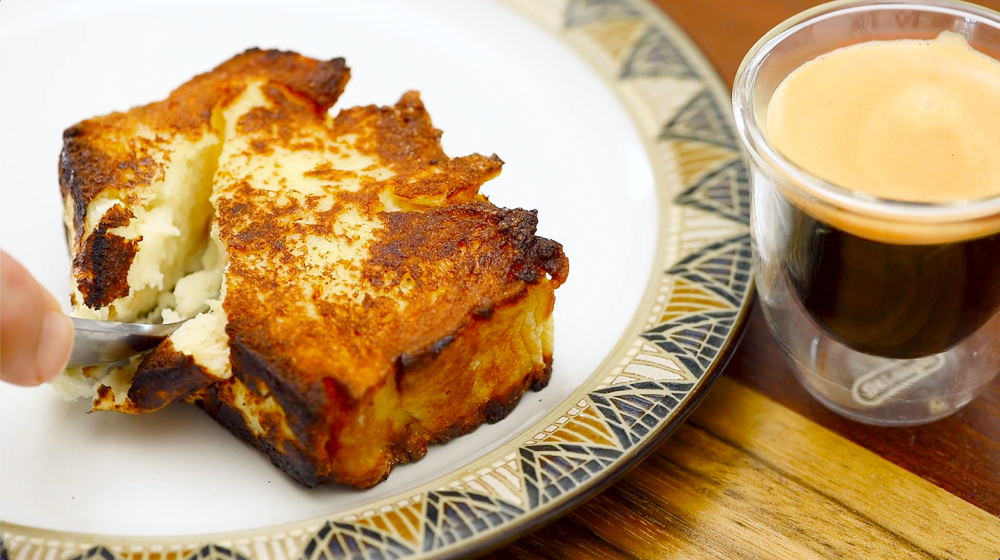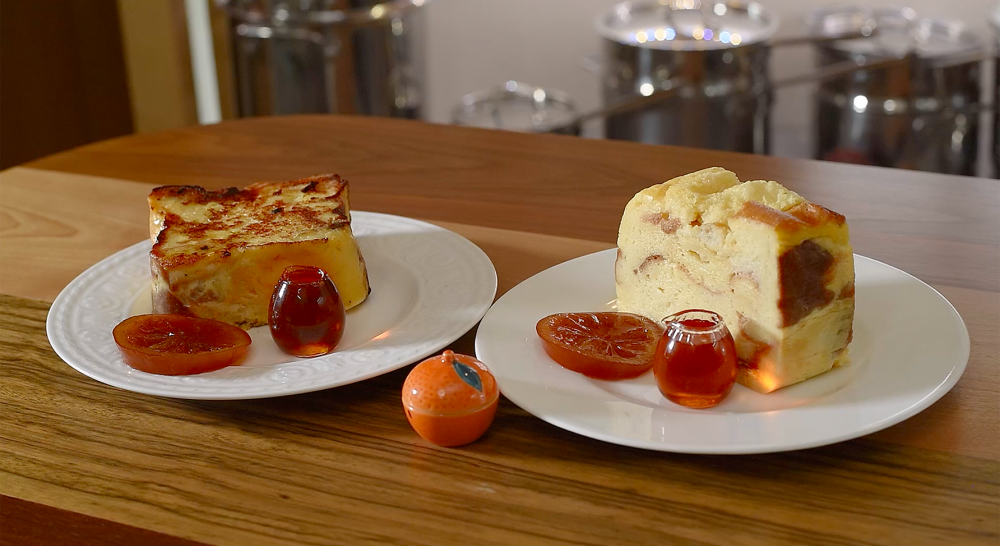-
Posts
285 -
Joined
-
Last visited
Content Type
Profiles
Forums
Store
Help Articles
Everything posted by cteavin
-
I think they're called scalloped potatoes. I sliced them and fried half in clarified butter with a bit of rosemary and garlic to get a crispy outer crust.
-
Wait a sec, those are soft shell crabs you're frying up? Oh, that sounds amazing. And is that tarter sauce on that bun?
-
I was hoping you all had some creative suggestions on what to with leftover rice. Typically, I form it into onigiri or fold in sautéed veggies (aka mazegohan). Sometimes I'll fold it into croquets. I have have a pot from dinner leftover and I'm thinking about what to do with it. Any suggestions? What do you do with your leftover rice?
-
You know, if your rice cooker is from Japan, there will be a function specifically for this specific style of rice. You'll see the characters 炊き込み or たきこみ in the menu or on the face of the rice cooker. Just in case you have have one, I thought I'd let you know. :)
-
This was a staple in university because I had no time to cook and no stomach for junk food. I would put everything in the rice cooker and have something warm to eat ready all day long. Here is a video so that you can easily understand: https://www.youtube.com/watch?v=p9UCXQcRQdU One recipe done in a slightly different order gives you two of Japan's easiest rice dishes, this one is called TAKIKOMI the other is MAZE GOHAN 3 cups Rice Shiitake Mushrooms (4 or 5) Seasonal Mushrooms (1/2 - 1 cup) 1 Carrot 1/2 cup sliced Burdock Root (Gobo -- any seasonal vegetable) 1 pack Konkyaku (has no flavor, adds texture, can omit) 2 fried tofu (abura age) (adds texture and protein, can omit) 200 grams Chicken (preferably leg meat) 2 tablespoons Soy Sauce 2 tablespoons Mirin (or 1 teaspoon sugar, 2 tablespoons sake)2 tablespoons Sake (this is said to negate any odor) Salt to taste 3 cups Dashi (note: the amount of vegetables and chicken is not precisely measured but ratio of rice to dashi is always 1 cup rice to 1 cup dashi. And, myself, I'm a bit carb-phobic, so I only use one cup rice.) 1. Wash the rice and set aside. Doing this will partly hydrate the rice which is said to improve the texture and flavor. 2. Slice the vegetables and set aside. (note: some people put the sliced burdock in water to remove bitterness and/or prevent oxidation) 3. Boil the konyaku and 'fried tofu' separately. Drain, slice, and set aside. 4. Slice the chicken, with skin, into bite sized pieces and add the soy sauce, mirin, and sake. 5. Prepare your dashi. 6. Now that all of your ingredients are ready, combine them either in a rice cooker or a deep sauce pan. 7. The rice MUST go into the pan first. Make sure it is evenly spread along the bottom. 8. Place the rest of the ingredients into the pot in any order but do not mix. 9. Add the dashi. 10. Set into your rice cooker. (Japanese rice cookers will have a special setting labeled 炊き込み.) 11. If you are using a stovetop, without stirring the pot, bring it to a boil then cover and reduce the heat to low. Cook for 13 minutes, then turn off the heat. Do not open the pot. Let it steam for an additional 15 minutes. 12. Stir the takikomi rice and serve.
-
Rice dishes are always a favorite in my home. Here is a takikomi with fresh bamboo and lots of different mushrooms.
-
That's funny. I'm interested in some 'sourdough' pancakes I saw online but at the same time I'm like, SOURdough PANCAKES and then wondered about AFB because it goes on for years. So what happened to that starter you were gifted?
-
-
-
-
Hi, I make sourdough starter one of two ways: water and flour in a jar, feeding it everyday for about a week or flour, water, and a pinch of yeast and feeding it for the week. I'm interested in Amish Friendship Bread and looking online I've seen several different versions all of which use a full packet of yeast from the start. Since the starter is kept for years and years, I'm wondering what the flavor is like when compared to a usual sourdough starter. Does anyone here have any experience with AFB? Any thoughts on the results?
-
I make Bread Puddings in a bread tin, then slice it and fry it in clarified butter for a rich version of French Toast. The pics are two different days. In the second, the bread pudding is on the right, the French Toast is on the right -- so crispy on the outside, so moist and sweet within.
-
I was getting my daily YouTube fix a bit ago and this video reminded me of you guys: a how to on making dashi with Japanese soups I'd never heard of. The recipe seems simple enough. Enjoy, if you're inclined.
-
I live in Japan. On one of my favorite shows they made a variation of croquettes without deep frying. Here are the steps: Cube a peeled potato, cook it about a cup of water in a fry pan. When soft, add 1/2 a minced onion, cover until soft. Add very lean ground beef and a few light seasonings and cook gently mashing the potato until all the water is either absorbed or evaporated and the mixture become stiff. Form patties in the pan. Add panko to the same fry pan and toast until they are the color you want. Lift the patties into the toasting panko, flip to coat then serve. You could see the patties were very soft, but I love the idea. I'd love suggestions on how to possibly make a crust for added texture without deep frying. Also, any suggestions on a binder to make the mixture stiffer?
-
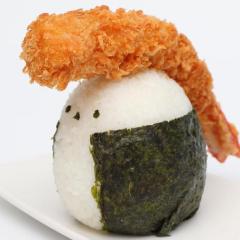
Suggestion for Katsuobushi Kezuriki (Bonito Shaver)
cteavin replied to a topic in Japan: Cooking & Baking
I'm in the market for a katusokiri. I came here to see what you all had to say about them and figure I'd add links to the two I'm considering. I prefer the smaller one, but the the one with the SK blade is on backorder for five months, so I might just go ahead and purchase the more expensive one. I'm going to Seibu to take a look at them today. http://www.dai-ya.com/台屋オンラインショップ/ From Daiya, a new brand, they're handmade. I'd purchase this one if only to support a local business. And this one from the well-known knife company, Kiya. http://www.ameyokonet.jp/kiya/search.php?f_keyword=%B3%EF%C0%E1&f_search=%B8%A1%BA%F7 If you've had any experience with them, let us know. -
I live in Japan and I've started on Japanese cooking. I'm one of those people who likes to know why certain things are done and those answers aren't in any of the cooking blogs or books I've come across. For example, why cook black beans for eight or more hours in sugar? Around new years there's a very popular dish of sweetened black beans. I know the goal is to cook them so the skins don't burst, but up to half a day? What's more, most recipes add some of the sugar at the beginning. Were it rice, it would never cook. Does putting the sugar in the beans from the beginning slow the cooking? Does a prolonged cooking partially candy the beans? I'd really like to know, because I made a dish with Azuki beans the other day (zen-zai) and to keep the skins from bursting I cooked the soaked beans for over two hours before adding the sugar and some of the beans did burst. For reference, the recipes I followed flowed like this: 1) Soak the beans over night, change the water. 2) Bring to a boil with a bit of salt or soy sauce and some amount of sugar. 3) Reduce the heat to barely a simmer with a piece of parchment over the surface and let it boil until they're just tender -- at least eight hours. 4) Add 1/3 the amount of the remaining sugar, cook for another half an hour. Repeat. Repeat. 5) Add a bit more soy sauce. Done.
-

What did you buy at the liquor store today? (2014 – 2015)
cteavin replied to a topic in Spirits & Cocktails
I bought a bottle of Nikka Coffey Grain Whisky -- which was one of the best whiskies I've ever had when mixed with soda -- and Nikka 17 year old Whisky. I've been looking for a bottle of the 21 year old Hibiki from Suntory. Japanese whisky rocks! -
Around October I made my first batch, spread over three bottles, of Aged Egg Nog. One was to sample week to week to get a feel for flavor and the other two were for the holiday -- it really does get better as it ages. The eggnog was such a success I've decided I have to have more. Of the recipes I started with was Alton Browns which said you could age it for a year, but every other recipe put a shelf life of at most two months in the fridge. Looking at recipes for Irish Cream I keep reading the same shelf life. I would think with the alcohol content high enough there would be no spoilage, even with raw egg yolks. Am I wrong in this assumption? Is there any science about how long something will keep in alcohol? In that past I've had Fruit Cakes, soaked in Navy Rum, that lasted years and were just as pleasant to eat after many years tucked away on grandma's pantry shelves.
-
I have 10 kilos of quince. I'd like to preserve them. I read recipes in which they are peeled and packed in honey raw. Honey is too expensive, so i was thinking I could pack them in sugar syrup in a large glass jar. Has anyone here ever preserved quince this way? I'm worried that over time the liquid in raw quince would dilute the syrup and attract mould. If not, does anyone have another suggestion besides paste?
-
Thank you much. I'll give it a try.
-
Can I ask, what kind of vegetables did you use to make your veggie stock?

